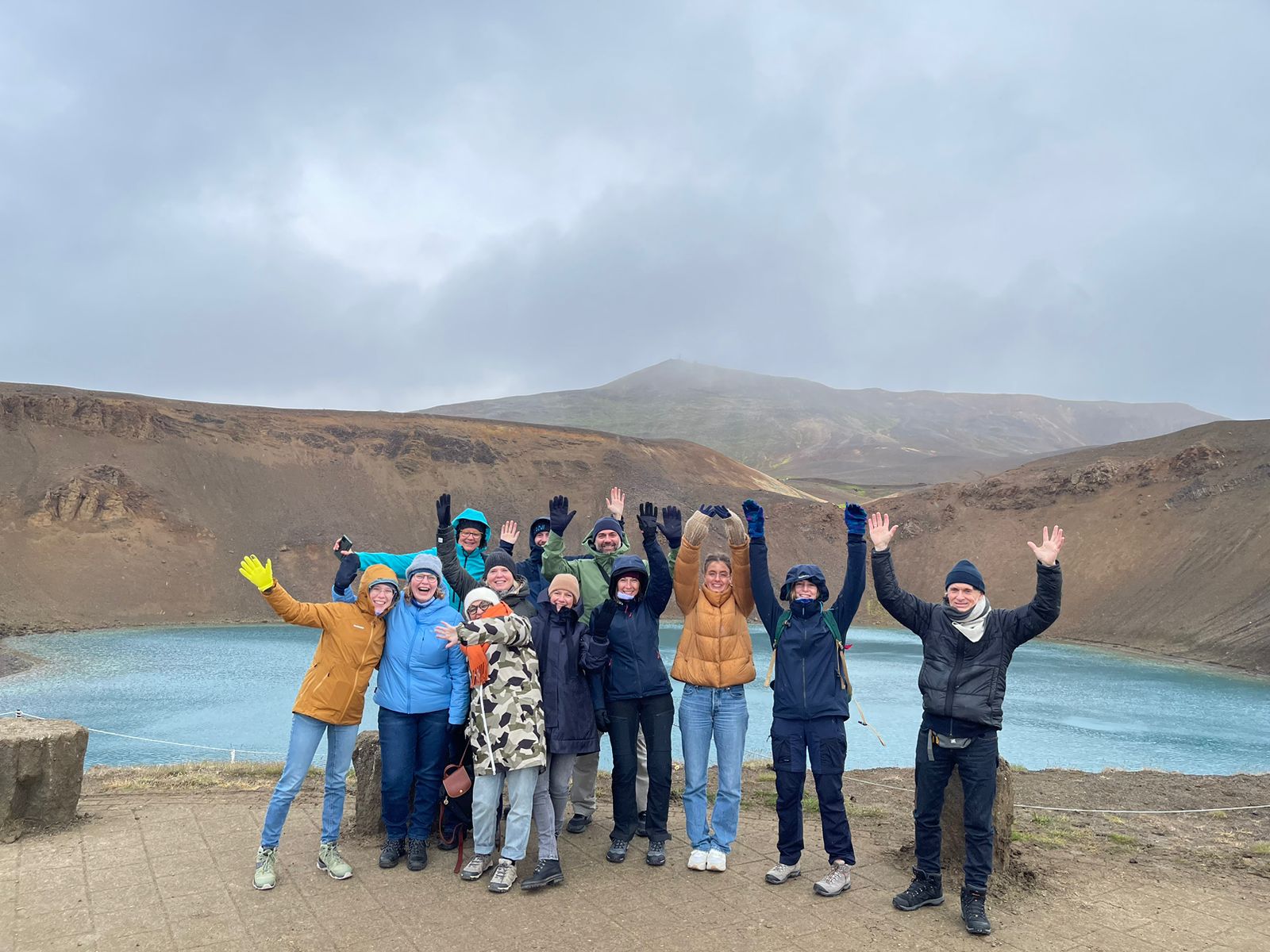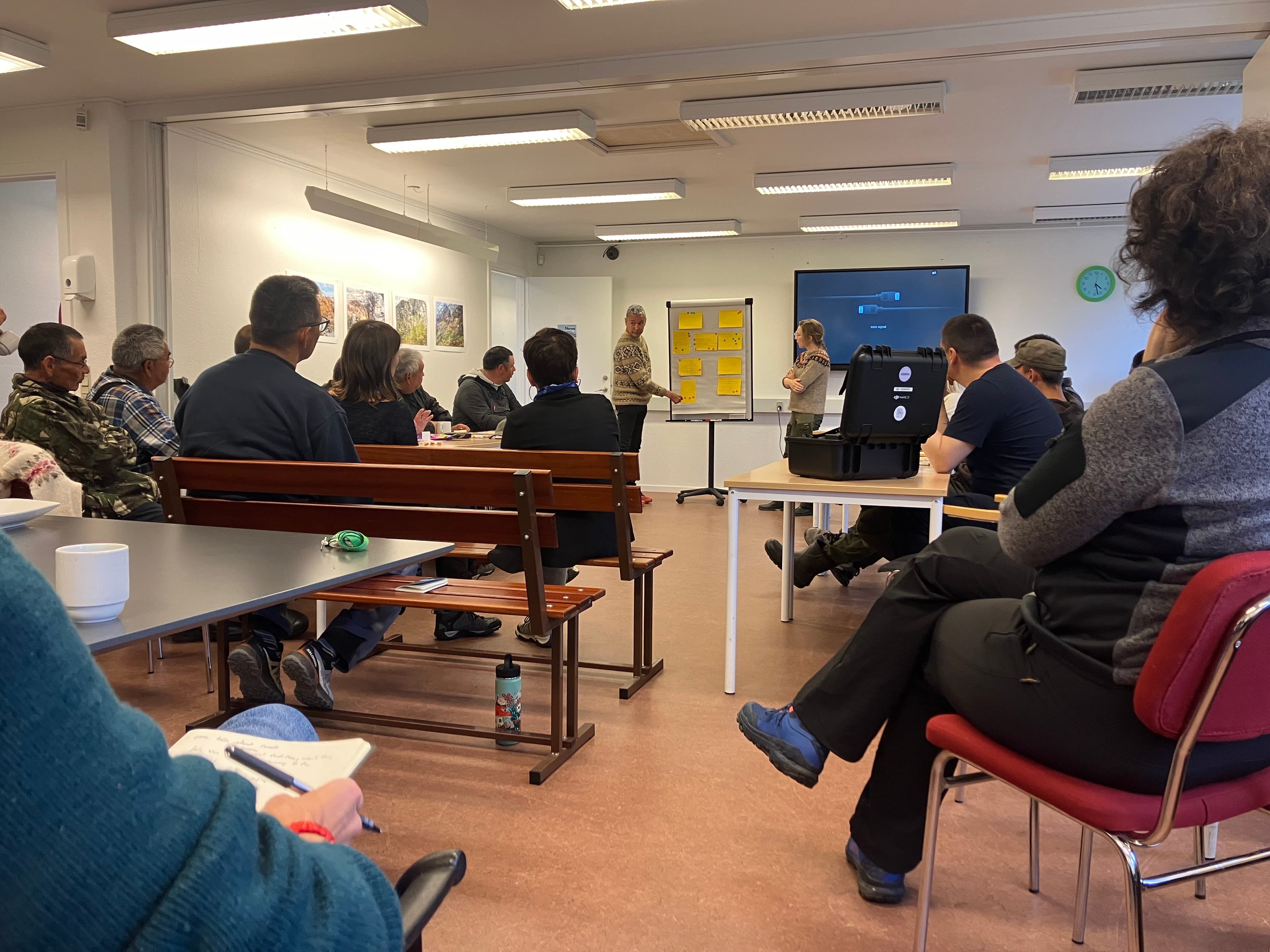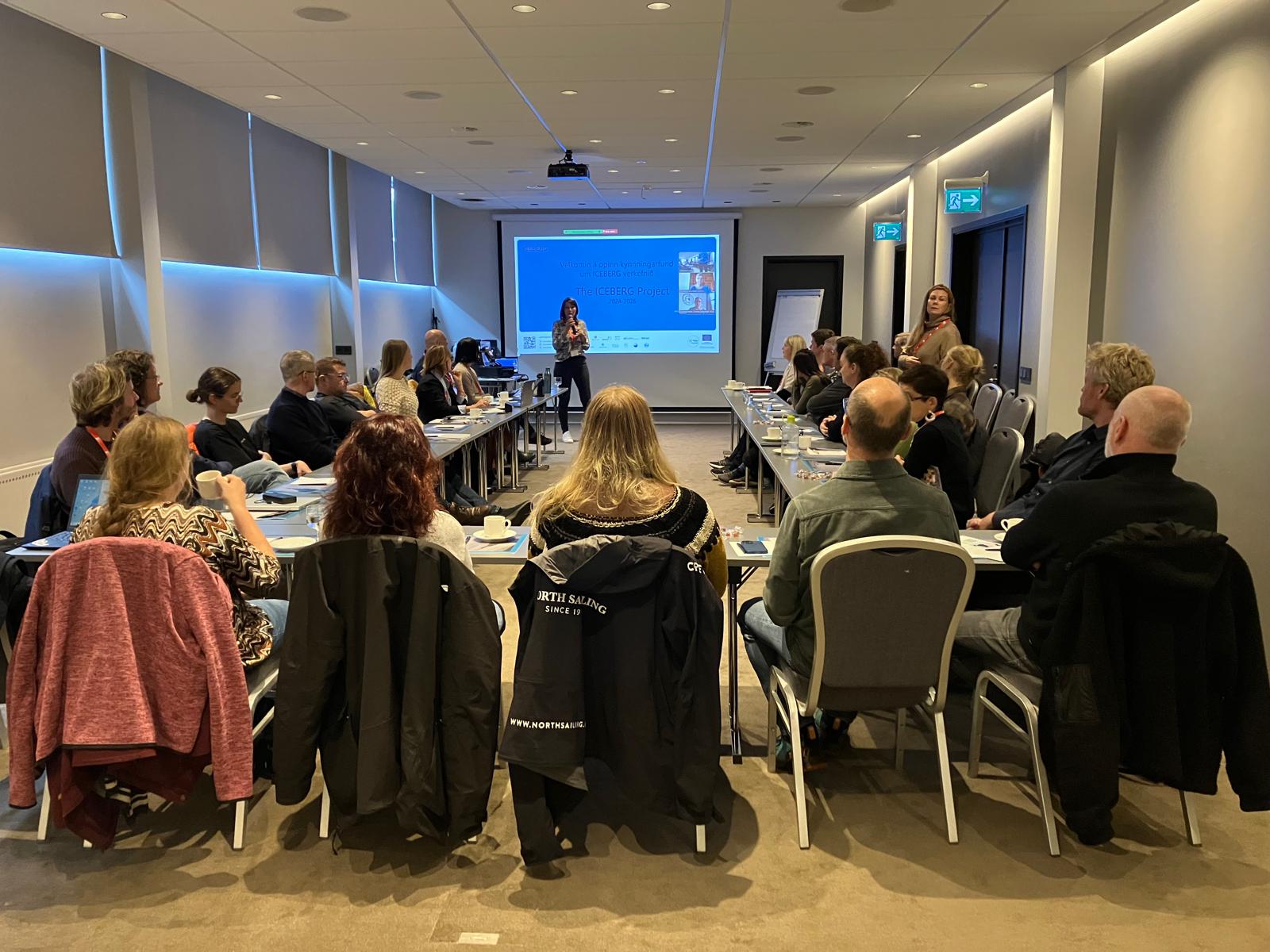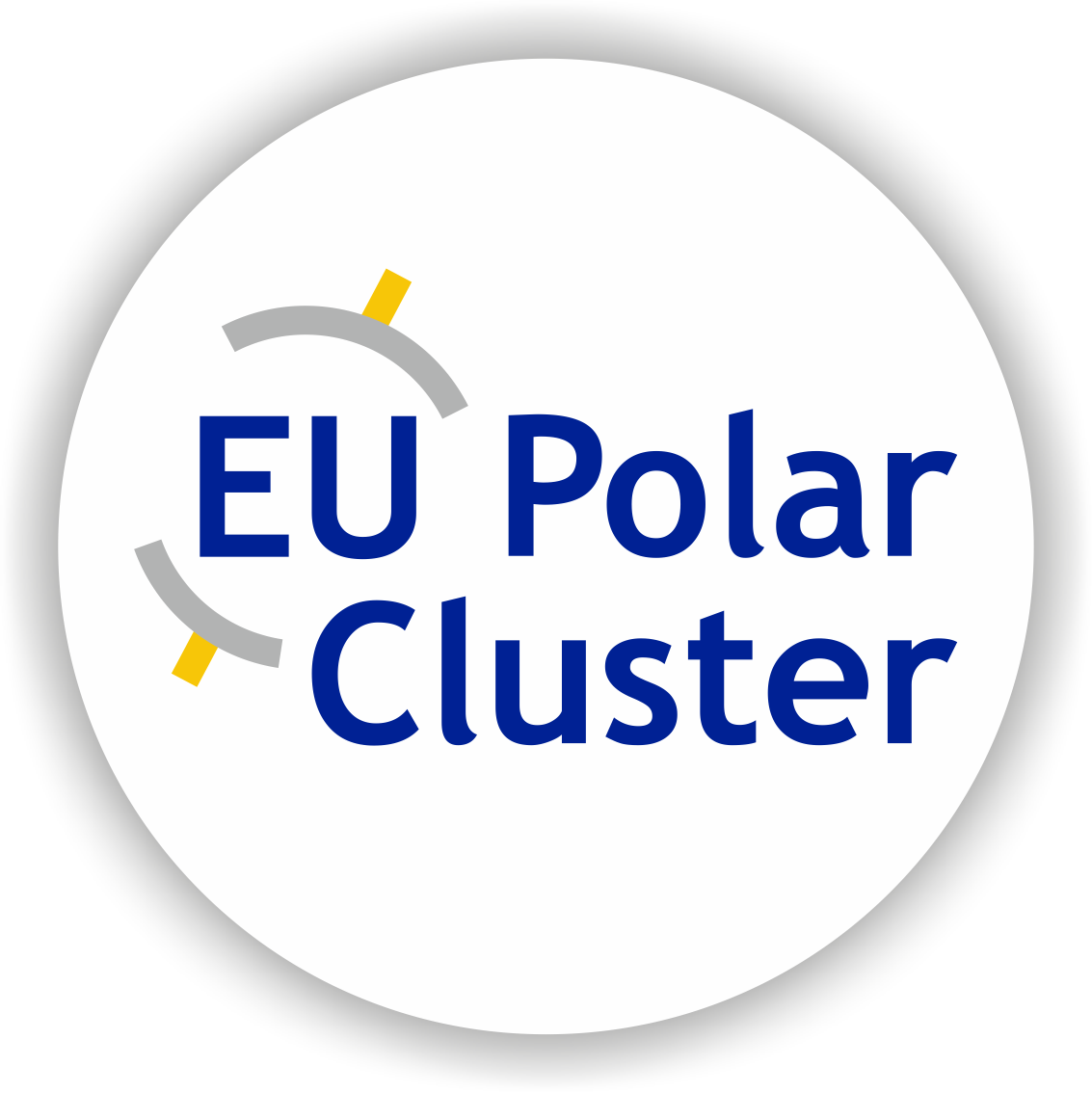Diary from Fieldwork in Iceland and Kalaallit Nunaat – Updating Article
ICEBERG was conducting fieldwork in Iceland and Kalaallit Nunaat (Greenland). In this updating article, Luisa Lollio from ICEBERG shared insights straight from the field.
ICEBERG was conducting fieldwork in Iceland and Kalaallit Nunaat (Greenland). In this updating article, Luisa Lollio from ICEBERG shared insights straight from the field.
We have come to the end of our community consultations and first field trip. Our paths separate: some of us leave for the return flights, others continue their journey and research. The weather in Kalaallit Nunaat is unpredictable and many of us had to extend our stay by a few days.
These weeks have been intense and inspiring for all of us. We are immensely thankful to Erik Kielsen in Qaqortoq and Narsaq, and to Huld Hafliðadóttir in Húsavik, for the opportunities we had to meet, exchange, share and talk to many Indigenous rightsholders and local stakeholders with different experiences and views on pollution and environmental changes.

The community consultation meetings we organized have attracted strong participation, with many local residents showing great interest in joining the citizen science activities. Several have actively started monitoring and reporting pollution through the citizen participation platform.
Many of us engaged in conversations and interviews, began jointly collecting first data for our research and made preparations and forged new connections for our return next year.

We leave with deep gratitude towards Erik and Huld and all community members in Húsavik, Akureyri, Narsaq and Qaqortiq whom we had the privilege to meet. We look forward with much interest to our next fieldwork together!
Today we gathered at the local high school, Kujalleq Campus, to organize and prepare for the community consultation meeting in Qaqortoq. 27 local residents showed up, among them, many students and teachers from the high school.
Apostolos (Papakonstantinou, SciDrones), Natascha (Oppelt) and Christine (Liang) had the opportunity to show examples of their work with drones, time lapse cameras and the citizen science platform. Erik translated our presentation in Greenlandic as he did for the community consultation in Narsaq.
After the project presentation, the meeting shifted to an interactive discussion where attendees shared their environmental observations and concerns related to the project. The conversation covered key local issues like mining exploration, waste from cruise ships, and the declining fish populations in the area.

The high level of interest and engagement from the attendees provided valuable insights for our research.
Following the rich discussion, a group of teachers and high school students organized a session with ICEBERG team members to learn how to fly drones and use cameras for community monitoring of pollution. Many community members gathered around maps, pointing out areas of pollution concern in and around Qaqortoq.
Today we met Erik Kielsen, member of the advisory board of the project. He walked us to the community center in Narsaq and together with him we organized a community consultation meeting with the aim of presenting the ICEBERG project and receiving feedback from the community and discussing it.
13 people attended, primarily hunters and fishermen. Erik translated our presentation in Greenlandic for the people who attended and in English to us the questions we received.

Before the presentation finished, the community expressed strong interest by asking about the ICEBERG team’s stance on mining, the project’s impact, and the research duration. These questions underscored the importance of community engagement and transparency in an area where researchers are frequent and where research findings are not always shared.
The primary concern identified was the proposed uranium mine, which could negatively affect fishing and hunting, potentially leading many to leave Narsaq. Other concerns included air pollution and changes in the behavior and number of sea mammals.
This morning, the ICEBERG team met with researchers from the University of Akureyri, along with members of PAME (Protection of the Arctic Marine Environment) and CAFF (Conservation of Arctic Flora and Fauna), the Arctic Council’s biodiversity working group.
We presented our project, after which each of the experts provided an overview on their respective research. Many of the research and monitoring initiatives share common topics or have aspects that are particularly relevant to our ICEBERG project.

Topics discussed and presented today included: air pollution in Akureyri, its causes and impact on people; ship traffic and tracking of marine litter; monitoring of the Arctic environment and ecosystems by indigenous and local communities; the changes in the fish population in this area; and the presence of microplastics in the Icelandic environment and food web.
The discussion and exchange that followed was very stimulating and rich, and our project was received with great curiosity and interest. After lunch, we met with members of the port facility and learnt how cruise ship administration works in the Akureyri fjord.
Afterwards we met with representatives of the Icelandic Farmers’ Association, with whom we discussed the possibility of the ICEBERG project to conduct further research into environmental issues of concern to farmers, in order to support and adapt to local needs.
The ICEBERG field research crew hosted a community meeting in Húsavík. There were around 30 people attending including the ICEBERG project members (14 people from the community).
At the beginning of the meeting, the project crew presented the project goals and areas of interest to the attendees. We also watched the ICEBERG promotional video together.

The core of the meeting was working together to discuss the project and the environmental observations and concerns of the attendees. Local themes that raised discussion were for example pollutants from burning materials, wastewater management, pollution induced by cruise ships, legislation and pollution monitoring.
The discussion showed that these issues are not straightforward. For example cruise ships cause pollution but are also an important matter of income for local people.

Another important theme that was discussed was the cultural dimension of the acts that cause pollution, for example the habit of letting car engines run in front of shops. For things to change, regulations are not enough – a cultural change is needed.
We also presented our community monitoring platform for the local people. The platform is an interactive map, where local people can report their observations of environmental change. The platform is now open for observations and can be found on OpenStreetMap.
There is more content to come regarding the ICEBERG fieldwork in Kalaallit Nunaat and Iceland. To stay tuned, follow this article and our social media accounts.
Find ICEBERG on:
Subscribe to our newsletter and stay updated on the progress of the project.
SubscribeProf. Thora Herrmann
University of Oulu
thora.herrmann@oulu.fi
Dr Élise Lépy
University of Oulu
elise.lepy@oulu.fi
Marika Ahonen
Kaskas
marika.ahonen@kaskas.fi
Innovative Community Engagement for Building Effective Resilience and Arctic Ocean Pollution-control Governance in the Context of Climate Change


ICEBERG has received funding from the European Union's Horizon Europe Research and innovation funding programme under grant agreement No 101135130